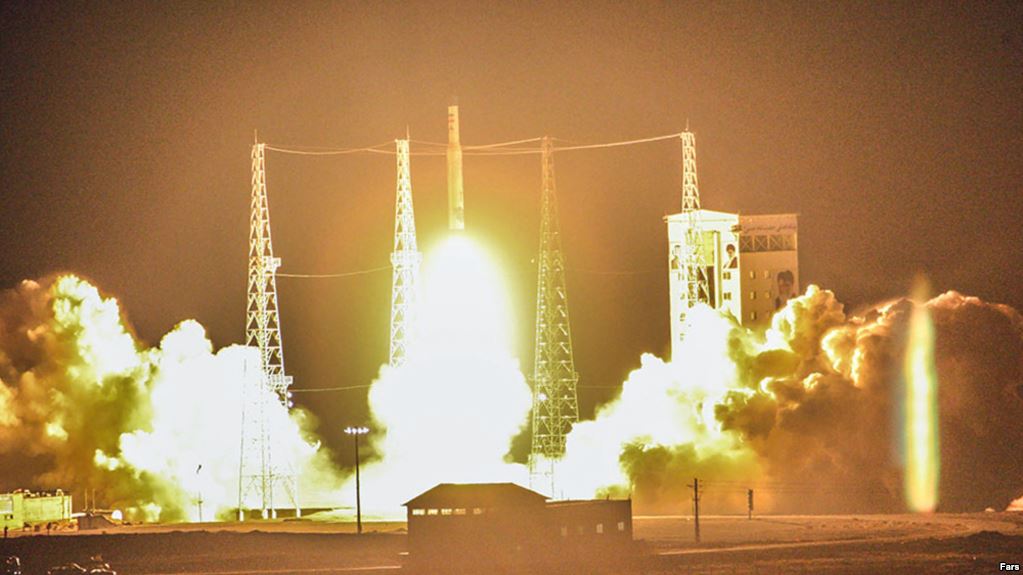Special to WorldTribune.com
Radio Free Europe / Radio Liberty
Two satellite-imagery companies have released photos that suggest Iran has attempted a second launch of a satellite after the failure of the first lift-off in January.

The United States on Jan. 15 condemned the previous launch attempt, warning that Washington “will not stand for Iran’s blatant disregard for international norms.”
The United States says Iran’s satellite program uses technologies “that are virtually identical and interchangeable with those used in ballistic missiles” in defiance of UN resolutions against any activity related to delivering nuclear weapons.
Iran insists its satellite and rocket launches do not violate UN resolutions that only “called upon” it not to conduct such tests. It has said its missile program is only for civilian purposes.
The images released early on Feb. 7 show a rocket at the Imam Khomeini Space Center in Iran’s Semnan Province on February 5. Images from the next day show the rocket was gone and what appear to be burn marks on its launch pad.
The images were released by Colorado-based DigitalGlobe and San Francisco-based Planet.
The images showed words written in Persian in large characters including the phrase “40 years” and “Iranian made.” Iran is this month celebrating the 40th anniversary of its Islamic Revolution.
It was not immediately known if the launch was successful.
Related: Fire at Iran space center kills 3 scientists days after missile tests, Feb. 5, 2019
David Schmerler, a senior research associate at the Middlebury Institute of International Studies, said that since Iran had made no immediate announcement surrounding the launch, it was possible it was unsuccessful.
After a launch in January failed to put a satellite into orbit, Teheran said it would launch a second satellite, called Doosti (Friendship), in the near future.
The Doosti is a remote-sensing satellite developed by engineers at Tehran’s Sharif University of Technology.
Teheran acknowledged the first failure, with Telecommunications Minister Mohammad Javad Azari Jahromi telling state TV that the rocket carrying the Payam (Message) satellite failed to reach the “necessary speed” in the third stage of launch.
President Hassan Rohani said the satellites were intended to gather information on environmental change in Iran.
